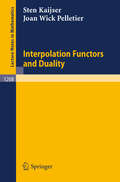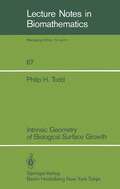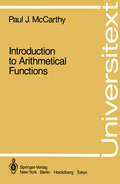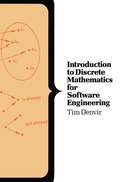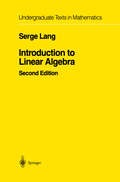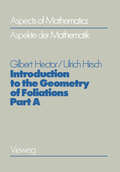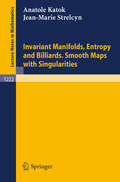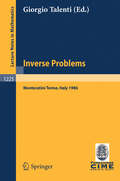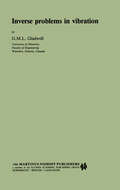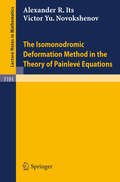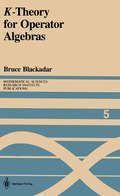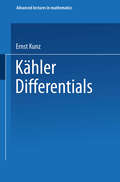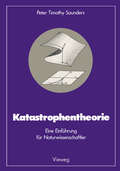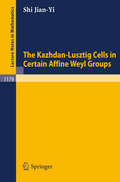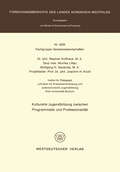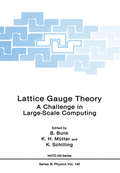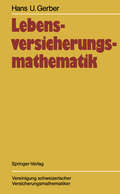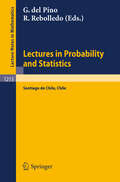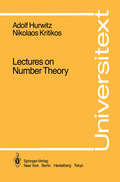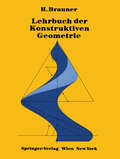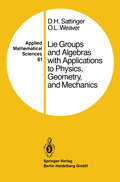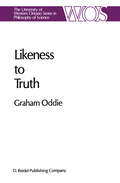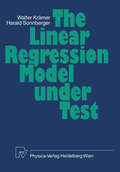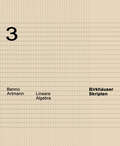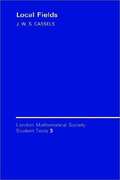- Table View
- List View
Interpolation Functors and Duality (Lecture Notes in Mathematics #1208)
by Sten G. Kaijser Joan w. PelletierIntrinsic Geometry of Biological Surface Growth (Lecture Notes in Biomathematics #67)
by Philip H. Todd1.1 General Introduction The work which comprises this essay formed part of a multidiscip linary project investigating the folding of the developing cerebral cortex in the ferret. The project as a whole combined a study, at the histological level, of the cytoarchitectural development concom itant with folding and a mathematical study of folding viewed from the perspective of differential geometry. We here concentrate on the differential geometry of brain folding. Histological results which have some significance to the geometry of the cortex are re ferred to, but are not discussed in any depth. As with any truly multidisciplinary work, this essay has objectives which lie in each of its constituent disciplines. From a neuroana tomical point of view, the work explores the use of the surface geo metry of the developing cortex as a parameter for the underlying growth process. Geometrical parameters of particular interest and theoretical importance are surface curvatures. Our experimental portion reports the measurement of the surface curvature of the ferret brain during the early stages of folding. The use of sur face curvatures and other parameters of differential geometry in the formulation of theoretical models of cortical folding is dis cussed.
Introduction to Arithmetical Functions (Universitext)
by Paul J. McCarthyThe theory of arithmetical functions has always been one of the more active parts of the theory of numbers. The large number of papers in the bibliography, most of which were written in the last forty years, attests to its popularity. Most textbooks on the theory of numbers contain some information on arithmetical functions, usually results which are classical. My purpose is to carry the reader beyond the point at which the textbooks abandon the subject. In each chapter there are some results which can be described as contemporary, and in some chapters this is true of almost all the material. This is an introduction to the subject, not a treatise. It should not be expected that it covers every topic in the theory of arithmetical functions. The bibliography is a list of papers related to the topics that are covered, and it is at least a good approximation to a complete list within the limits I have set for myself. In the case of some of the topics omitted from or slighted in the book, I cite expository papers on those topics.
Introduction to Linear Algebra (Undergraduate Texts in Mathematics)
by Serge LangThis is a short text in linear algebra, intended for a one-term course. In the first chapter, Lang discusses the relation between the geometry and the algebra underlying the subject, and gives concrete examples of the notions which appear later in the book. He then starts with a discussion of linear equations, matrices and Gaussian elimination, and proceeds to discuss vector spaces, linear maps, scalar products, determinants, and eigenvalues. The book contains a large number of exercises, some of the routine computational type, while others are conceptual.
Introduction to the Geometry of Foliations, Part A: Foliations on Compact Surfaces, Fundamentals for Arbitrary Codimension, and Holonomy (Aspects of Mathematics #1)
by Gilbert HectorInvariant Manifolds, Entropy and Billiards. Smooth Maps with Singularities (Lecture Notes in Mathematics #1222)
by Anatole Katok Jean-Marie StrelcynInverse Problems: Lectures Given at the 1st 1986 Session of the Centro Internazionale Matematico Estivo (C.I.M.E.) Held at Montecatini Terme, Italy, May 28-June 5, 1986 (Lecture Notes in Mathematics #1225)
by Giorgio TalentiInverse problems in vibration (Mechanics: Dynamical Systems #9)
by G.M.L. GladwellThe last thing one settles in writing a book is what one should put in first. Pascal's Pensees Classical vibration theory is concerned, in large part, with the infinitesimal (i. e. , linear) undamped free vibration of various discrete or continuous bodies. One of the basic problems in this theory is the determination of the natural frequencies (eigen frequencies or simply eigenvalues) and normal modes of the vibrating body. A body which is modelled as a discrete system' of rigid masses, rigid rods, massless springs, etc. , will be governed by an ordinary matrix differential equation in time t. It will have a finite number of eigenvalues, and the normal modes will be vectors, called eigenvectors. A body which is modelled as a continuous system will be governed by a partial differential equation in time and one or more spatial variables. It will have an infinite number of eigenvalues, and the normal modes will be functions (eigen functions) of the space variables. In the context of this classical theory, inverse problems are concerned with the construction of a model of a given type; e. g. , a mass-spring system, a string, etc. , which has given eigenvalues and/or eigenvectors or eigenfunctions; i. e. , given spec tral data. In general, if some such spectral data is given, there can be no system, a unique system, or many systems, having these properties.
The Isomonodromic Deformation Method in the Theory of Painleve Equations (Lecture Notes in Mathematics #1191)
by Alexander R. Its Victor Y. NovokshenovK-Theory for Operator Algebras (Mathematical Sciences Research Institute Publications #5)
by Bruce BlackadarK -Theory has revolutionized the study of operator algebras in the last few years. As the primary component of the subject of "noncommutative topol ogy," K -theory has opened vast new vistas within the structure theory of C* algebras, as well as leading to profound and unexpected applications of opera tor algebras to problems in geometry and topology. As a result, many topolo gists and operator algebraists have feverishly begun trying to learn each others' subjects, and it appears certain that these two branches of mathematics have become deeply and permanently intertwined. Despite the fact that the whole subject is only about a decade old, operator K -theory has now reached a state of relative stability. While there will undoubtedly be many more revolutionary developments and applications in the future, it appears the basic theory has more or less reached a "final form." But because of the newness of the theory, there has so far been no comprehensive treatment of the subject. It is the ambitious goal of these notes to fill this gap. We will develop the K -theory of Banach algebras, the theory of extensions of C*-algebras, and the operator K -theory of Kasparov from scratch to its most advanced aspects. We will not treat applications in detail; however, we will outline the most striking of the applications to date in a section at the end, as well as mentioning others at suitable points in the text.
Katastrophentheorie: Eine Einführung für Naturwissenschaftler (Facetten der Physik)
by Peter T. SaundersThe Kazhdan-Lusztig Cells in Certain Affine Weyl Groups (Lecture Notes in Mathematics #1179)
by Jian-Yi ShiKulturelle Jugendbildung zwischen Programmatik und Professionalität (Forschungsberichte des Landes Nordrhein-Westfalen #3205)
by Stephan KolfhausLattice Gauge Theory: A Challenge in Large-Scale Computing (Nato Science Series B: #140)
by B. Bunk K.H. Mutter K. SchillingThis volume presents the contributions to the international workshop entitled "Lattice Gauge Theory - a Challenge in Large Scale Computing" that was held in Wuppertal from November 4 to 7, 1985. This meeting was the third in a series of European workshops in this rapidly developing field. The meeting intended to bring together both active university research ers in this field and scientists from industry and research centers who pursue large scale computing projects on problems within lattice gauge theory. These problems are extremely demanding from the point of view of both machine hardware and algorithms, for the verification of the continuum fields theories like Quantum Chromodynamics in four-dimensional Euclidean space-time is quite cumbersome due to the tremendously large number of de grees of freedom. Yet the motivation of theoretical physicists to exploit computers as tools for the simulation of complex systems such as gauge field theories has grown considerably during the past years. In fact, quite a few prominent colleagues of ours have even gone into machine building, both in industry and research institutions: more parallelism, and more de dicated computer architecture are their design goals to help them boost the Megaflop rate in their simulation processes. The workshop contained several interesting seminars with status reports on such supercomputer projects like the Italian APE (by E. Marinari), the IBM project GF-11 (by D. Weingarten), and the Danish projects MOSES and PALLAS (by H. Bohr).
Lectures in Probability and Statistics: Lectures Given at the Winter School in Probability and Statistics Held in Santiago de Chile (Lecture Notes in Mathematics #1215)
by Guido Del Pino Rolando RebolledoWith contributions by numerous experts
Lectures on Number Theory (Universitext)
by Adolf HurwitzDuring the academic year 1916-1917 I had the good fortune to be a student of the great mathematician and distinguished teacher Adolf Hurwitz, and to attend his lectures on the Theory of Functions at the Polytechnic Institute of Zurich. After his death in 1919 there fell into my hands a set of notes on the Theory of numbers, which he had delivered at the Polytechnic Institute. This set of notes I revised and gave to Mrs. Ferentinou-Nicolacopoulou with a request that she read it and make relevant observations. This she did willingly and effectively. I now take advantage of these few lines to express to her my warmest thanks. Athens, November 1984 N. Kritikos About the Authors ADOLF HURWITZ was born in 1859 at Hildesheim, Germany, where he attended the Gymnasium. He studied Mathematics at the Munich Technical University and at the University of Berlin, where he took courses from Kummer, Weierstrass and Kronecker. Taking his Ph. D. under Felix Klein in Leipzig in 1880 with a thes i s on modul ar funct ions, he became Pri vatdozent at Gcitt i ngen in 1882 and became an extraordinary Professor at the University of Konigsberg, where he became acquainted with D. Hilbert and H. Minkowski, who remained lifelong friends. He was at Konigsberg until 1892 when he accepted Frobenius' chair at the Polytechnic Institute in Z~rich (E. T. H. ) where he remained the rest of his 1 i fe.
Lie Groups and Algebras with Applications to Physics, Geometry, and Mechanics (Applied Mathematical Sciences #61)
by D.H. Sattinger O.L. WeaverThis book is intended as an introductory text on the subject of Lie groups and algebras and their role in various fields of mathematics and physics. It is written by and for researchers who are primarily analysts or physicists, not algebraists or geometers. Not that we have eschewed the algebraic and geo metric developments. But we wanted to present them in a concrete way and to show how the subject interacted with physics, geometry, and mechanics. These interactions are, of course, manifold; we have discussed many of them here-in particular, Riemannian geometry, elementary particle physics, sym metries of differential equations, completely integrable Hamiltonian systems, and spontaneous symmetry breaking. Much ofthe material we have treated is standard and widely available; but we have tried to steer a course between the descriptive approach such as found in Gilmore and Wybourne, and the abstract mathematical approach of Helgason or Jacobson. Gilmore and Wybourne address themselves to the physics community whereas Helgason and Jacobson address themselves to the mathematical community. This book is an attempt to synthesize the two points of view and address both audiences simultaneously. We wanted to present the subject in a way which is at once intuitive, geometric, applications oriented, mathematically rigorous, and accessible to students and researchers without an extensive background in physics, algebra, or geometry.
Likeness to Truth (The Western Ontario Series in Philosophy of Science #30)
by G. OddieThe concept of likeness to truth, like that of truth itself, is fundamental to a realist conception of inquiry. To demonstrate this we need only make two rather modest aim of an inquiry, as an inquiry, is realist assumptions: the truth doctrine (that the the truth of some matter) and the progress doctrine (that one false theory may realise this aim better than another). Together these yield the conclusion that a false theory may be more truthlike, or closer to the truth, than another. It is the aim of this book to give a rigorous philosophical analysis of the concept of likeness to truth, and to examine the consequences, some of them no doubt surprising to those who have been unduly impressed by the (admittedly important) true/false dichotomy. Truthlikeness is not only a requirement of a particular philosophical outlook, it is as deeply embedded in common sense as the concept of truth. Everyone seems to be capable of grading various propositions, in different (hypothetical) situations, according to their closeness to the truth in those situations. And (if my experience is anything to go by) there is remarkable unanimity on these pretheoretical judge ments. This is not proof that there is a single coherent concept underlying these judgements. The whole point of engaging in philosophical analysis is to make this claim plausible.
The Linear Regression Model Under Test
by W. Kraemer H. SonnbergerThis monograph grew out of joint work with various dedicated colleagues and students at the Vienna Institute for Advanced Studies. We would probably never have begun without the impetus of Johann Maurer, who for some time was the spiritus rector behind the Institute's macromodel of the Austrian economy. Manfred Deistler provided sustained stimulation for our research through many discussions in his econometric research seminar. Similar credits are due to Adrian Pagan, Roberto Mariano and Garry Phillips, the econometrics guest professors at the Institute in the 1982 - 1984 period, who through their lectures and advice have contributed greatly to our effort. Hans SchneeweiB offered helpful comments on an earlier version of the manuscript, and Benedikt Poetscher was always willing to lend a helping . hand when we had trouble with the mathematics of the tests. Needless to say that any errors are our own. Much of the programming for the tests and for the Monte Carlo experiments was done by Petr Havlik, Karl Kontrus and Raimund Alt. Without their assistance, our research project would have been impossible. Petr Havlik and Karl Kontrus in addition. read and criticized portions of the manuscript, and were of great help in reducing our error rate. Many of the more theoretical results in this monograph would never have come to light without the mathematical expertise of Werner Ploberger, who provided most of the statistical background of the chapter on testing for structural change . .
Lineare Algebra (Birkhäuser Skripten #3)
by B. ArtmannDies Skript enthält den Standards toff der Linearen Algebra, w~e er ~n den ersten Semestern üblich ist. Es wurde in verschiedenen Formen zu Vorlesungen herausgegeben, die ich für Studenten der Mathematik, Physik und Informatik an der Technischen Hochschule Darmstadt gehalten habe. Ich habe mir Mühe gegeben, den Text so einfach und leicht zugänglich wie möglich zu schreiben und jeweils typische Beispiele zu finden, um Sätze und Begriffe zu illustrieren. Die Lineare Algebra kann man unter drei Aspekten sehen: geometrisch im Sinne der analytischen Geometrie, arithmetisch wie bei den Linearen Gleichungssystemen und vielen Teilen der Matrizenrechnung, die für die Numerik wichtig sind, und schließlich strukturbetont-abstrakt in der linearen und bilinearen Theorie der Vektorräume. Alle drei Aspekte soll ten in einer Einführung zur Geltung kommen, so auch in diesem Skript. Allerdings habe ich versucht, die begriffliche Behandlung eines Stoffes so weit wie möglich ans Ende der jeweiligen Paragraphen zu stellen, um vorher über Geometrie und Arithmetik eine verläßliche Intuition für den Gegenstand aufzubauen. Diesem Zweck dienen besonders die einführenden Abschni tte über die geometrischen Verhäl tnisse im ]R2 . Gerade hier hat der Student, der ja die weitere Theorie nocht nicht überblicken kann, die Gelegenheit, aus der anschaulichen Fundierung den Sinn und die Be deutung der Begriffe und Fragestellungen zu begreifen und damit von einer vernünftigen Basis aus weiterzuarbeiten.
Local Fields (London Mathematical Society Student Texts #3)
by J. W. S. CasselsThe p-adic numbers, the earliest of local fields, were introduced by Hensel some 70 years ago as a natural tool in algebra number theory. Today the use of this and other local fields pervades much of mathematics, yet these simple and natural concepts, which often provide remarkably easy solutions to complex problems, are not as familiar as they should be. This book, based on postgraduate lectures at Cambridge, is meant to rectify this situation by providing a fairly elementary and self-contained introduction to local fields. After a general introduction, attention centres on the p-adic numbers and their use in number theory. There follow chapters on algebraic number theory, diophantine equations and on the analysis of a p-adic variable. This book will appeal to undergraduates, and even amateurs, interested in number theory, as well as to graduate students.
